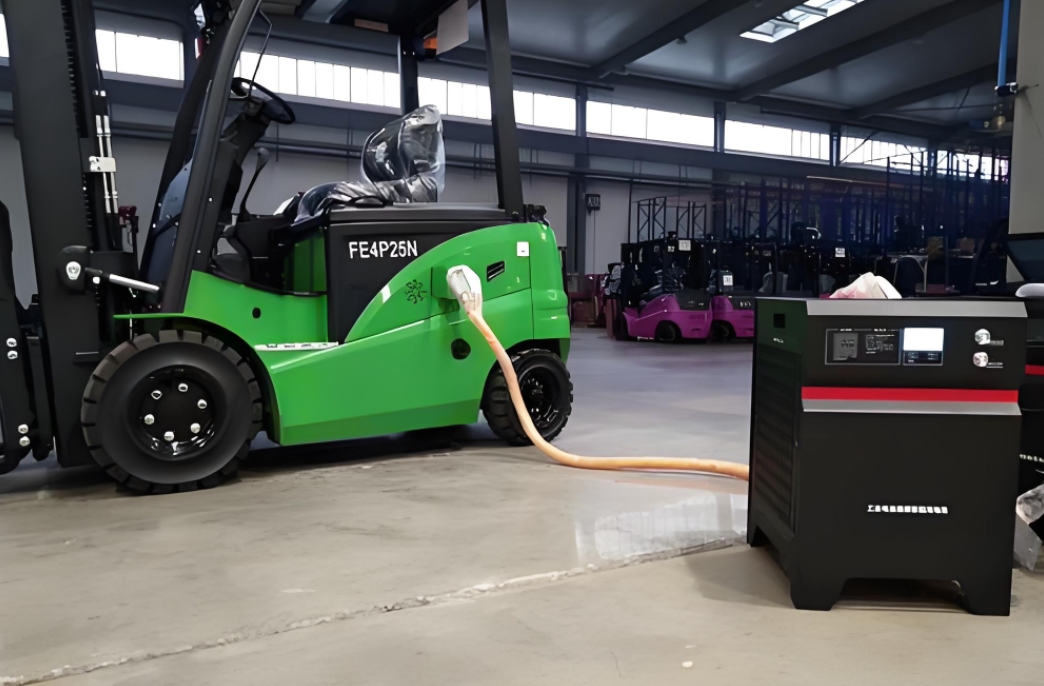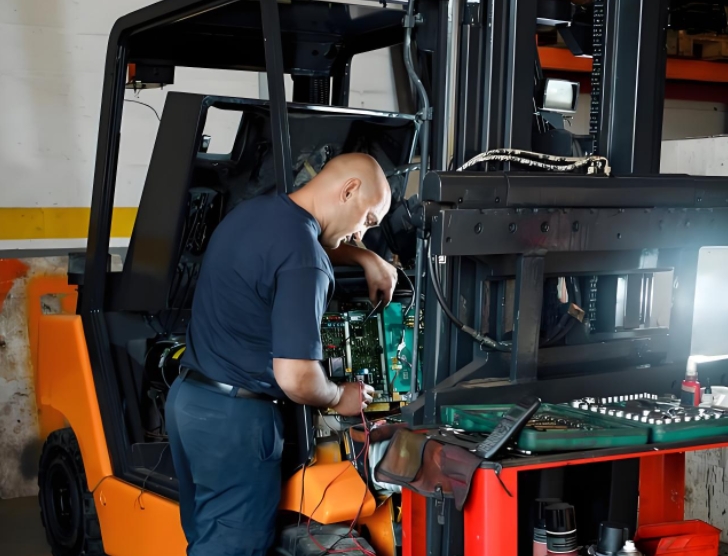Blog
Daily Maintenance Checklist for Electric Forklifts

Complete Preventive Maintenance Checklist for Electric Forklifts: Daily, Weekly, Monthly & Annual Schedules
1. Introduction: The Value of Preventive Maintenance
Reactive maintenance—fixing equipment after it breaks—is the most expensive approach to fleet management. Unplanned downtime, emergency repair costs, and shortened equipment lifespan significantly impact your bottom line. A structured Preventive Maintenance (PM) program is the strategic alternative that maximizes uptime, ensures operator safety, and protects your investment in Yuweida electric forklifts and other material handling equipment.
This comprehensive checklist provides a detailed, actionable maintenance schedule for owners and operators. By adhering to these intervals and procedures, you can identify potential issues before they cause failures, maintain peak efficiency, and ensure the long-term reliability of your equipment. This guide is designed specifically for the maintenance needs of electric-powered forklifts, pallet jacks, and stackers.
2. The Philosophy of a Tiered Maintenance Program
A effective PM program is built on frequency-based tiers:
- Daily Checks: Quick, visual inspections performed by the operator before each shift. Focus on safety-critical items.
- Weekly Checks: More detailed inspections that require basic tools. Often performed by a senior operator or designated technician.
- Monthly Checks: Comprehensive system checks and adjustments. Require more technical knowledge and tools.
- Annual Checks: Full system overhaul and certification. Typically performed by a certified technician.
This structure ensures critical items are checked frequently while less critical, but still important, items are addressed regularly.
3. Daily Maintenance Checklist (Pre-Shift Inspection)
Perform these checks at the start of every shift. Document findings in a logbook.
3.1 Operational Safety Check
- Control Functions: Test forward/reverse, lift/lower, and tilt functions for smooth operation.
- Braking Performance: Test service brake and parking brake for positive engagement.
- Steering Response: Check for smooth operation without excessive play or binding.
- Horn, Lights, Backup Alarm: Verify all warning devices are functional.
3.2 Visual Inspection
- Hydraulic System: Look for any visible leaks on cylinders, hoses, valves, and pump.
- Tires: Check for cuts, excessive wear, abnormal tread wear patterns, and (if pneumatic) proper inflation.
- Forks: Inspect for cracks, wear at the heel, and straightness. Ensure the locking pin is secure.
- Safety Decals: Verify all warning and capacity plates are legible and present.
3.3 Battery & Electrical Check
- Battery Charge: Check state of charge indicator. Connect to charger if below 20%.
- Connectors: Inspect battery plug and socket for signs of burning, pitting, or corrosion.
- Cables: Check for fraying, cuts, or exposed wires on power cables.
4. Weekly Maintenance Checklist
Perform these checks once per week or every 50 operating hours.
4.1 Detailed Battery Maintenance (Lead-Acid)
- Water Levels: Check electrolyte levels in all cells. Add distilled water as needed (after charging).
- Terminals: Clean battery terminals and cable connectors with a wire brush. Apply anti-corrosion spray.
- Vent Caps: Ensure vent caps are secure and not clogged.
- Battery Compartment: Check for dirt, debris, and acid residue. Clean with a baking soda/water solution if necessary.
4.2 Chassis & Mechanical Inspection
- Hardware: Check for loose nuts, bolts, and guards. Torque to specifications.
- Chain Lubrication: Lubricate mast and lift chains with appropriate chain lube.
- Overhead Guard: Inspect for damage and secure mounting.
5. Monthly Maintenance Checklist
Perform these checks once per month or every 200 operating hours.
5.1 Advanced Hydraulic System Check
- Hydraulic Fluid Level: Check with forks fully lowered. Top up with manufacturer-recommended fluid type.
- Hydraulic Filter: Inspect filter condition and replace if necessary.
- System Pressure: Perform a pressure test to verify pump and relief valve are operating within specifications.
5.2 Drive System Inspection
- Brake Adjustment: Check and adjust brake pedal travel and parking brake.
- Drive Axle: Check for oil leaks from axle seals.
- Wheel Bearings: Check for excessive play or noise.
5.3 Electrical System Diagnostic
- Controller: Visually inspect for damage. Clean any dirt from cooling fins.
- Contactors: Check for pitting on contacts.
- Wiring Harness: Inspect for chafing, pinching, or loose connections.
6. Annual Maintenance Checklist
Perform a comprehensive inspection annually or every 1,000-1,200 operating hours by a qualified technician.
6.1 Full System Fluid Service
- Hydraulic Fluid: Drain and replace hydraulic fluid.
- Filter Replacement: Replace all hydraulic filters (suction and pressure).
- Drive Axle Oil: Drain and replace gear oil in the drive axle.
6.2 Component Overhaul & Certification
- Mast Inspection: Disassemble and inspect mast rollers, bearings, and channels for wear.
- Cylinder Rebuilding: Inspect cylinder rods for pitting and bending. Replace rod seals if necessary.
- Load Test: Perform a rated capacity load test to verify structural integrity and system performance.
- Fork Inspection: Officially measure fork thickness and length for compliance with ANSI/ITSDF B56.1 standards.
7. Seasonal & Special Condition Maintenance
7.1 Cold Weather Operation (Below 0°C/32°F)
- Battery Performance: Expect reduced battery capacity (up to 40% in extreme cold).
- Hydraulic Fluid: Switch to a lower viscosity hydraulic fluid (e.g., ISO VG 32) for easier cold-weather operation.
- Traction: Consider using pneumatic tires for better traction in snow and ice.
7.2 Multi-Shift Operation
- Battery Changing: Establish a formal battery changing procedure and schedule.
- Charger Availability: Ensure you have enough chargers for your fleet size and shift pattern.
- Increased Inspection Frequency: For heavy-use equipment, move weekly checks to daily and monthly checks to weekly.
8. Documentation and Record Keeping
Maintaining detailed records is a critical part of any PM program.
- Log All Services: Record date, hours, technician, and tasks performed for every maintenance event.
- Track Component Life: Record the installation date and hours on key components like batteries, pumps, and controllers to predict replacement needs.
- Warranty Compliance: Proper records are often required to maintain warranty coverage.
- Resale Value: A complete service history significantly increases the resale value of your equipment.
9. Conclusion: The Return on Investment in Preventive Maintenance
Implementing this structured maintenance program requires discipline and resources, but the return on investment is undeniable:
- Reduced Downtime: Eliminate catastrophic, unexpected failures.
- Lower Repair Costs: Address small issues before they become major repairs.
- Extended Equipment Life: Protect your capital investment and maximize its productive lifespan.
- Enhanced Safety: Ensure every piece of equipment is in safe working condition for your operators.
Treat this checklist as a living document. Adapt it to your specific operating environment, usage patterns, and Yuweida equipment models. For complex annual inspections and repairs, always leverage the expertise of Yuweida’s technical support network or authorized service partners to ensure the work is performed to the highest standard.


Hi there all, here every one is sharing such know-how,
therefore it’s fastidious to read this website, and I used to pay
a visit this weblog everyday.